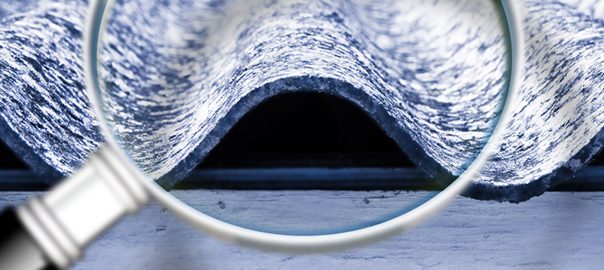The ’80s were also marked by hysteria over asbestos. In the 1970s, it became increasingly clear that exposure to this fibrous material had the potential to cause cancer and other respiratory problems. Perhaps what fueled asbestos hysteria the most was the revelation that asbestos could be found just about everywhere — in offices, churches, schools, grocery stores and, worst of all, homes.
The surge to have asbestos removed from buildings and dwellings began, and governments across the globe moved to ban and phase out production of asbestos in manufacturing. Through the decades, a lot of asbestos has been removed from buildings throughout the world, but there’s plenty more still in place. And since removing asbestos is dangerous — not to mention expensive — is it better to have it removed or to just leave it alone?
Living in a home with intact asbestos doesn’t necessarily pose a health risk. Most people who suffer asbestos-related major health problems are exposed to the substance over long periods of time, such as workers in factories that produce asbestos products [source: National Cancer Institute]. But when these materials in your home deteriorate over time, or become disturbed or damaged, asbestos fibers can be released into the air. It’s a material with lots of staying power; fibers can stay around your house for years. Once released, these fibers — especially the small, invisible variety — can be breathed into your lungs.
Over time, these fibers can build up in your lungs, causing lung cancer and mesothelioma — a cancer of the lung and abdominal cavity lining. Asbestos is a dangerous enough health risk that it even has a medical condition named for it: Asbestosis, which is a permanent scarring of the lung tissue. These scars can prove deadly over time.
There are a number of places asbestos may be found in your home. It occurs naturally as a form of magnesium silicate, and has been mined and used in manufacturing since the 19th century. The asbestos is separated into single fibers and added to products as a flame retardant or used as insulation. Paint, insulation, fiberboard, siding, soundproofing tiles, roof shingles, floor tile and cement have all included asbestos at one time or another, and some of these products still remain in some homes. Even vermiculite, the small white Styrofoam-like pellets found in potting soil, contains asbestos.
In homes built in the United States or Western Europe since the 1980s, there’s little chance that asbestos is present. It’s generally found more often in older homes. But if your tastes run toward the vintage and you live in an older home, how can you find out if asbestos is present in your dwelling?
In the late 1970s, the U.S. Environmental Protection Agency (EPA) and similar agencies in Europe began certifying professionals in asbestos identification and removal. If you think that you may have asbestos in your home, you should call a contractor to come out and perform a survey of your house. In some states the EPA itself is in charge of conducting inspection and removal of asbestos. This may be a good time to let the dog out back and take the kids to the movies; taking samples of materials that contain asbestos is dangerous, as the process releases airborne filaments into the air. You shouldn’t take samples yourself.
If the samples come back positive and you suddenly find yourself feeling like you share your home with a sleeping killer, what should you do? Should you have it removed or leave it alone? Call the experts Pro Coats Painting LLC can make sure your family is safe. Call us today 734-652-4202

